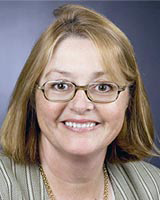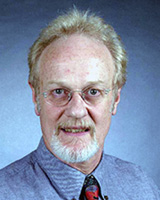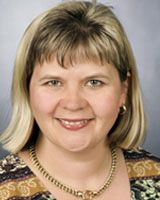Medical students are increasing being taught in distributed educational settings1-8. That is, educational settings distant from the main tertiary teaching settings. Distributed educational settings can be situated in rural, regional or outer urban areas. There are several factors which have contributed to this educational shift in the last 10 to 15 years, including the recognition that community settings are excellent learning environments5,9-11, increasing numbers of medical school places12-14 and a recognition of the limitations for the teaching medical students in tertiary institutions. Finally, and most importantly, governments are trying to address the global rural doctor shortage with the ultimate aim of improving the health status of those in rural communities15-19.
In distributed learning environments medical students are often taught by private practitioners, residents, house staff and registrars as well as faculty. Through a mix of short and long term preceptorships, clerkships and rotations medical students are exposed to a wider range of preceptors, mentors and role models than has been the case traditionally.
Definitions
In this review Walters definition of a preceptor is used20. A preceptor is defined as the clinician with whom the medical student is working and who has responsibility for the student's learning and the patients' care and safety.
In the USA and Canada, the term 'clerkship' and 'preceptorship' are used interchangeably. The terms are used to describe the discipline specific placements that medical students undertake in their clinical training years. In these clinical placements, preceptors are responsible for both student teaching and patient safety.
In this review 'career choice' refers to the actual career of medical school graduates in retrospective studies. In prospective studies 'career choice' can only be interpreted as 'career intent'.
In this review, a Longitudinal Integrated Clerkship (LIC) has to meet the agreed international definition as determined by the Consortium of Longitudinal Integrated Clerkships (CLIC)21. An LIC must have the following common core elements:
- Medical students participate in the comprehensive care of patients over time.
- Medical students have continuing learning relationships with these patients' clinicians.
- Medical students meet, through these experiences, the majority of the year's core clinical competencies across multiple disciplines simultaneously.
Inclusion and exclusion criteria
To be included in the review, literature had to be published in the English language, from any country, between the years 1995 and 2010, and focus on undergraduate or graduate entry medical programs. Opinion pieces or commentaries where no evidence was presented were excluded from the review.
Search strategy
The search was structured around the key terms Medical Student, Career Choice and Preceptor and variants of these terms. Search limits were set to English-language publications between 1995 and 2010. The year 1995 was chosen because this was when research started to appear in the Australian literature from the programs funded by the Australian Government to address the rural doctor workforce shortage in early the 1990s.
The search structure was slightly different in each search depending on the limitations of the individual database. The search included Ovid Medline, Scopus, ISI Web of Science, PubMed, Eric and CIHNAL data bases.
A hand search of journal articles accumulated by the author from previous research endeavours was conducted using the same search criteria. A hand search of grey literature including reports, newsletters and program evaluations found 2 articles. All articles meeting the selection criteria were snowballed to capture additional literature. These snowballed articles were subjected to the same search criteria.
Search
The combined searches from Ovid, Scopus, Web of Knowledge, Eric CINAHL, and Pub Med resulted in 408 citations. The authors own library resulted in 22 articles being selected for review. Snowballing from these 430 articles produced 101 articles. A hand search of books, reports and journal articles held in the Flinders University Rural Clinical School was conducted. These were read and 2 articles were found that met the search criteria. This resulted in 533 articles selected for review; 29 articles were subsequently removed because of duplication. After reviewing all titles, 193 articles were removed from the search as the titles did not indicate relevance to the aims of this study. Abstracts from the remaining 311 articles were read, resulting in the rejection of 201 articles. The remaining 110 full articles were read and 36 were selected for the final review based on their relevance to the review question: 'In what ways are medical students influenced in making their career choice through experiences with preceptors'. A flow diagram shows articles selected for review (Fig1).
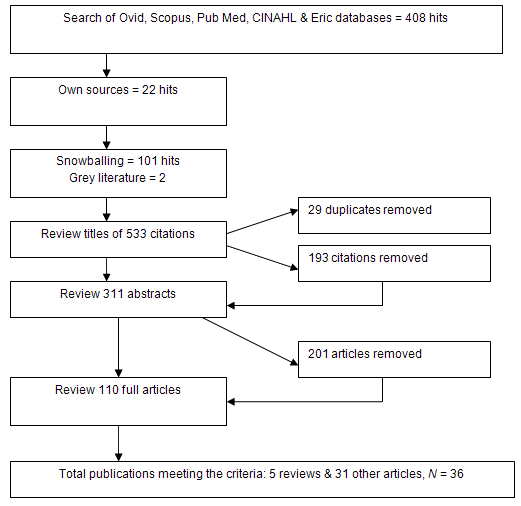 Figure 1: Flow diagram showing articles selected for review.
Figure 1: Flow diagram showing articles selected for review.
Quality assessment
An inter-coder reliability test was performed by comparing two different assessments of one article17 in two separate studies using the Campos-Outcalt et al's (CO) quality rating system22. There was concordance between Thistlethwaite et al16 and this reviewer in assessing Veitch et al17. The quality ratings of the articles in this review and Thistlethwaite et al's ranged between 8 and 41/70 with an average of 23. Both reviews ascribe the low rating to the fact that that few studies were conducted with a theoretical base and the validity and reliability of questionnaires was rarely mentioned. The quality rating was applied to all the articles selected for the final review to test the strength of the findings.
The characteristics of the articles in the final review are shown (Table 1). Twenty-five of the articles in this review are retrospective articles where career choice has been determined. Of the Australian articles, 3 articles and both program evaluations refer to the same program. A synthesis of the data in each of the articles obtained from the systematic review is presented (Table 2). The factors influencing career choice found in the five previously published reviews of the literature found in the search is presented (Table 3).
Table 1: Characteristics of articles in the review, according to country1,7-9,15,17,22-47
 Table 2: Data synthesis articles obtained from systematic review1,8,9,15,17,23-47
Table 2: Data synthesis articles obtained from systematic review1,8,9,15,17,23-47
 Table 3: Systematic reviews-factors influencing career choice22,48-51
Table 3: Systematic reviews-factors influencing career choice22,48-51
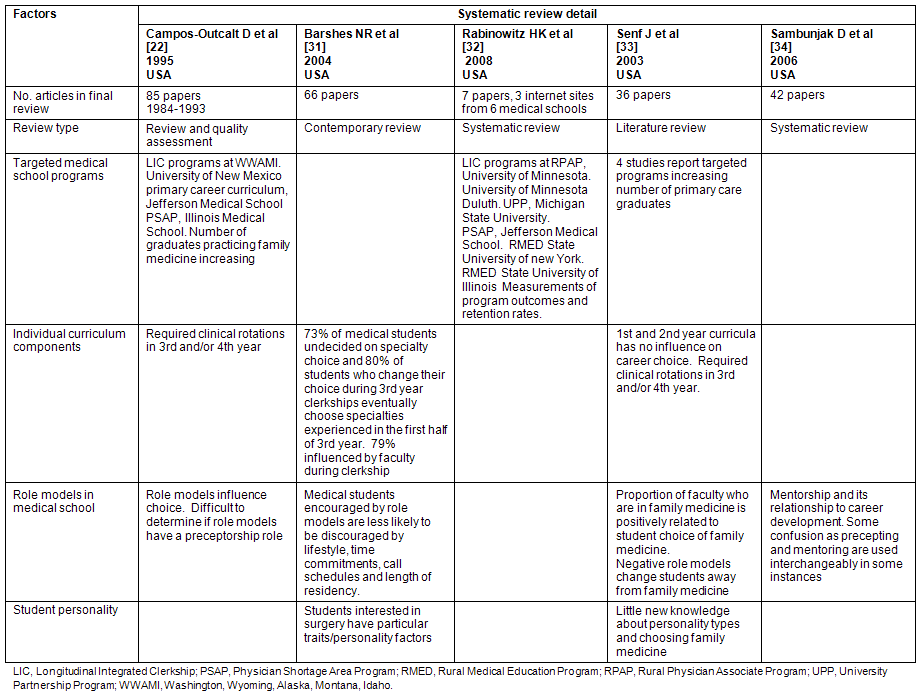
Analysis of the literature
The literature is grouped by common themes. First, by length of placement; second, by discipline either primary care or as a distinct 'other' discipline; and third, as a required or free choice placement. An analysis of the influence of preceptors within these groups is presented. Finally, an analysis of the five previously published reviews is presented. Some studies are discussed multiple times under these different groupings.
Influence of preceptors in clinical placements of 8 weeks' duration or less
Eleven articles described clinical placements less than 8 weeks duration; these are referred to as 'clerkships'. The clerkships varied in length from 5 days32 to 8 weeks27,35-37,39,40,42-44,46.
There is evidence that primary care preceptorships of 2-8 weeks duration do influence medical students' career choices. The 9 year study of 10 081 students from 8 Texas medical schools compared workforce outcomes from students participating in the Texas State-wide Family Practice Preceptorship Program27 and non-Texas State-wide Family Practice Preceptorship Program participants. The study shows the programs efficacy as a family practice workforce strategy. Neiman reported that the proportion of students choosing family practice residencies among Texas State-wide Family Practice Preceptorship Program participants was significantly greater than among non-participants. In all, 27.9% of Texas State-wide Family Practice Preceptorship Program participants chose family practice (OR, 4.98; 95% CI, 3.75-6.68) compared with 15.7% of non-participants who chose family practice. Neiman did undertake a qualitative analysis of students' perception of the preceptorship but this is not reported in this article.
The study by Levy39 sought to understand how the quality of a 3 week required family medicine preceptorship (as determined by the student) influenced career choice. Students who rated the education value of the required preceptorship experience high or very high were 2.9 times more likely to match into family practice. In both articles how the specific influence of preceptors is excerted is unclear.
Arora's study of 6 academic teaching centres found that 75% of respondents matched to General Internal Medicine within 2 years of which 28% of these undertook a General Internal Medicine residency35. Student satisfaction with preceptor characteristics such as availability, relationships, clinical excellence and quality of teaching were associated with a career in General Internal Medicine (GIM; p=0.01). Arora found that for each 1 point increase in overall student satisfaction (on a 5 point Lickert scale) students were almost 4 times as likely to pursue a GIM career (p <0.001) (p 473)35.
Similarly, both faculty and resident interactions are reported as influencing career choice in the pre- and post-survey results of the study by O'Herrin et al43. They argue that it is the (perceived) quality of preceptorship, including role modelling which is most influential. In the study by Schwartz et al44 of 16 medical schools it was found that an ambulatory rotation is strongly associated with positive perceptions of, attraction to, and choice of a career in internal medicine. Schwartz et al note that the perceived satisfaction of the residents that students were exposed to in the ambulatory rotation exerted a powerful influence on career choice. Students with an initial interest in internal medicine were more likely to 'switch' away from their earlier decision if they were not highly satisfied with their rotation (p=0.002) compared with students who were highly satisfied with their rotation.
Jospe et al32, Elnicki et al36, Malloy et al40, and Mihalynuk46 show modest evidence of a relationship between the clerkship experience and career choice. However, there is no evidence to support the thesis that the preceptors are the cause of the influence or evidence of how the influence is excerpted. Gazewood et al37 and Cochran et al44 found no evidence of preceptor influence on career choice (p >0.10 and p=0.218, respectively).
Negative preceptor influence on future career choice was found by Cochran et al who reported that students' impressions of surgeons' collegial behaviour including perceived disrespect for other physicians and commitment to teaching deteriorated during the clerkship44.
Influence of preceptors in clinical placements longer than 8 weeks' duration
Ten of the 13 articles that describe clinical placements longer than 8 weeks are of LIC. These are analysed under their own heading7-9,15,17,23-25,28,47.
Medical students are influenced in their career choice by preceptors they judge as being more effective clinical teachers and role models38,41. In the retrospective study by Musunurus et al, 2632 student evaluations of 108 surgical clerkship residents were researched. Medical students taught by the highest-rated residents were more likely to pursue surgical residency training compared with students taught by the least effective residents (12% vs 4.9%, p=0.022). Approximately 12% of students taught by the top 20 resident educators pursued surgical careers.
In a much smaller study, Hugget38 argued that students begin clinical experiences with sophisticated definitions of professional expertise and specific expectations of professionalism and knowledge from their preceptors. He argued that this is significant because students closely associate professional expertise with good teaching. He did not, however, link this specifically to career choice, rather an absence of discussion of career related issues by preceptors reinforced negative assumptions about primary care.
At the University of Iowa, Levy found that students who rated a 4-12 week elective in a community based hospital as high or very high were significantly more likely to go into family practice (OR 2.9)39. Interest in family practice after the elective increased (p=0.003) and remained high (p=0.020). Levy proposes that the influence of preceptors may be critical for those students who enter medicine with a low interest in family medicine.
Influence of preceptors in longitudinal integrated clerkships
Ten articles were classified by the author as concerning LICs7-9,15,17,23-25,28,47.
Extended LICs with continuity relationships with preceptors may affect career choice25. Eley et al reported that time spent in a rural educational environment was the most commonly cited response from students contributing to an interest in practicing rurally. In this 2 year LIC, students refered to their preceptors as mentors and role models and they were positively associated with students making a rural career choice. Eley et al suggested that the 2 year rural education program has a more positive effect on workforce outcomes than the 12 month programs at the same institution.
Students have reported changing their career choices from one discipline to another and from urban to rural locations as a result of preceptor influences in LIC programs9,17, and some rural origin students report that preceptor influence confirmed their career choice9,15. Students cited the positive influence of teachers, both GPs and specialists, as key influences on making a rural pathway career choice7-9,15,17,23-25,28,47.
Ogur et al28 found that longitudinal relationships with faculty preceptors provided time for students to develop connections leading to meaningful mentorship. The goal of this pilot program was to facilitate the learning of core skills and knowledge regardless of specialty interest and, therefore, no evidence was provided to link the continuity experience with preceptors to career choice.
Influence of preceptors in primary care clerkships
Many short primary care clerkships have been established with the aim of influencing student career choice in order to fill workforce shortages and improve health outcomes. Fourteen studies were situated within the disciplines of primary care8,9,15,17,25,27,29-31,33,37.
Connelly et al defined a primary care physician as one practicing in general internal medicine, general pediatrics, family practice, or general practice33. In the USA, primary care also includes obstetrics/gynaecology29. In Australia, primary care is provided by GPs. Primary care clerkships occur in private general practices8,9,15,17,25,29,30, university medical centres17,29,36, community health centres8,29,36, community hospitals8,9,15,25, ambulatory settings15,27,37, primary care outpatients32 and inpatient general internal medicine rotations35.
Preceptors in short primary care preceptorships do influence medical students' career choices. This is evidenced in several extended studies that show the efficacy of primary care preceptorships as a workforce strategy27,34,39. Campos-Outcalt and Senf stated 'implementing a required third year family practice clerkship led to an immediate, significant increase in the proportion of students choosing family practice'34. The mean proportion of students choosing family practice increased by 2.6% above control groups in public schools (95% CI = 1.06, 3.65 and 2.07% in private schools (95% CI, -2.58, 6.73). The specific influence of the preceptors is implied.
In a national study in the USA, Connelly concluded that the effect of having a primary care role model (preceptor) in fourth year of medical school was associated with more than 3 times greater odds of planning to practice in primary care. Connelly concluded that the combined effect of a positive primary care role model (preceptor) and time (continuing positive support into residency) can result in medical students pursuing a career in primary by a factor of 6.633.
Short, one-week community preceptorship showed little evidence of stimulating students to consider generalist careers30,37 and no direct link from the preceptors to career choice was presented. Similar results were found in Wamsley et al qualitative study in which students experienced a continuity outpatient experience over 22 half-days. Students reported the experience as beneficial for the support and career guidance that they received and for mentorship and role modelling31.
Influence of preceptors in other discipline specific clerkships
Most discipline specific clerkships occur in a tertiary teaching institutions and are of a shorter duration than the LICs. Many have been established with the aim of influencing student career choice in order to fill workforce shortages and improve health outcomes.
There were 7 studies situated within the various disciplines of interdisciplinary26, paediatrics32, psychiatry40, surgery41,42,44, and oncology45 in this review.
The quality of the preceptor/teaching clinician (as determined by the student) appeared particularly important to students in determining whether to choose a surgical career41,42,44. Medical students taught by the highest-rated residents were more likely to pursue surgical residency training compared with students taught by the least effective residents41. Negative influences of surgical preceptors were found to 'turn off' students from pursuing surgical careers. Negative influences included disrespect by surgeons for other clinicians, not promoting surgery as a possible career to students and, not actively teaching students41,42,44.
Similarly Jospe et al found that students rated pediatric clerkships in private offices as an excellent learning experience resulting in an increased interest in pursuing a paediatric career (p=0.006)32.
Increased interest in discipline specific careers after clerkships is evident40,42,45. O'Herrin et al reported an increased interest in pursuing a surgical career after a surgical clerkship. Contributing to this change was number of cases that students participated which was ranked as the highest influencing factor (95%) and resident interaction was ranked second (85%)42. While student interactions with residents was identified as a contributor to this change, what those interactions were and how they exerted influence was not stated. Malloy et al found students were three times more likely to pursue child and adolescent psychiatry than a control group{44). The influence of preceptors on these results is inferred but not explicitly stated. Similarly, in the only European study, Loriet et al45 stated that 83% of respondents reported that undergraduate experience influenced them to choose oncology and that 62% made this decision during undergraduate training. However, the direct influence of preceptors was not evidenced.
There is one interdisciplinary study in this review, the 9 year Interdisciplinary Generalist Curriculum Project26. In their recommendations for curricular change from a national perspective, Wartman et al made 16 recommendations to support continuity with preceptors and patients to support education and workforce outcomes.
Influence of preceptors in required or free choice clinical placements
Three articles identify clerkships as a required component of the curriculum38,39,44. At the time of publication, the study by Levy was the first study that specifically examined how the quality of a required family medicine preceptorship (as determined by the student) added to the predictability of students matching into family medicine39. Students who rated the education value of the required preceptorship experience highly were 2.9 times more likely to match into family practice.
Levy studied the effect of an elective community based preceptorship at the same institution as the required family practice preceptorship39. The elective preceptorship experience was a significant and positive indicator of matching into family practice. Interest in family practice after the elective increased (p=0.003) and remained high (p=0.020). Levy argued that this study provides indirect evidence of the influence of preceptors on career choice specifically for those students not initially interested in family medicine. In contrast, Cochran et al44 and Huggett et al38 both supported the view that required clerkships are less effective as a workforce strategy than free choice programs.
Analysis of previously published reviews
The 1995 review and quality assessment of 85 articles by Campus Outcalt et al looked at the effect of medical school curricula, role models and federal funding on the specialty choice of medical students22. Campus Outcalt concluded that LICs such as the Washington, Wyoming, Alaska, Montana, Idaho (WWAMI) program, the University of New Mexico Primary Career Curriculum, Jefferson Medical School Physician Shortage Area program (PSAP) and the program at Illinois Medical School do influence student career choice. He believes educational context and role models are influential but did not state if the role models were also preceptors.
Barshes' contemporary review of factors central to medical student specialty choice found that half of medical students maintain their original career choice preference throughout medical school48. He contended that the importance of mentors and role models are fundamental to students' career decision-making. He noted that influential role models and mentors include teaching specialists and residents as well as faculty. The influence can be both positive and negative especially in the field of surgery where 'badmouthing' and negative interactions by surgeons with patients and colleagues turns students away from the field48.
Rabinowitz et al reported on 10 studies from 6 programs which have the primary goal of increasing the supply of rural doctors49. The 6 programs are the Rural Physician Associate Program at the University of Minnesota, the University of Minnesota Duluth program, the Upper Peninsula Program at the Michigan State University, the Physician Area Shortage program at Jefferson Medical School, the Rural Medical Education Program at the State University of New York and the Rural Medical Education Program at the State University of Illinois. The review looked at the programs from the perspective of the educational intervention. As educational interventions with the goal of increasing the supply of rural doctors these programs are undeniably successful with between 53% and 64% of graduates practising rurally.
Senf reviewed 36 articles on family medicine practice choices50. Senf found that in a 4 year medical program, 1st and 2nd year curricula has no influence on career choice. Senf supports the view that required clinical rotations in 3rd and/or 4th year had most influence on student career choice. Senf reported that all studies that examined the influence of role models on student career choice found that negative role models were more influential than positive role models. Negative role models resulted in students switching away from their original career choice.
Sambunjak et al specifically looked at the influence of role modelling in career choice and career development in a review of 42 articles51. They commented that although mentorship is acknowledged as being an important influence on medical student career choice there is little detail on how the mentorship works.
A limitation of this study is that of self-selection of students to study in a LIC. Some LICs are known to be free choice through the admissions policy9,47. This is a variable which needs to be taken into account when analysing student career choice as it could bias the outcome of the program. This has been noted by Couper et al52 and also by Pathman et al53. However, in some articles in this review it was unclear if the preceptorships were free choice or required.
The influence of role models and mentors is refered to throughout the articles in this review but no definition is given, leaving this open to reader interpretation22,25,31,38,41,42,48,50,51.
Discussion
The systematic review sought to understand if and how, medical students are influenced in making their career choice by preceptors in a clinical setting. The nomenclature used to describe the act of precepting differs across and within geographical boundaries. Regardless of the term used (role model, physician teacher, mentor, preceptor etc), this review has shown that those clinicians with the dual responsibility of teaching and being responsible for the patients in the clinical setting do influence medical students' career choices.
Students begin clinical experiences with sophisticated expectations of professional expertise, professionalism and knowledge transfer from preceptors. Students' perceptions of professional expertise is closely linked to students assessing the preceptor as a good teacher and rating the educational value of the preceptorship highly. Preceptors who are judged to be high quality teachers have the greatest influence on student career choice. Student satisfaction with high quality teaching by preceptors can increase career choice by up to four-fold. Students who rate the quality teaching by preceptors as poor are influenced away from that discipline.
There is evidence that the perceived quality of teaching in short preceptorships of 2-8 weeks' duration in primary care do influence medical students' career choices. Positive workforce outcomes have been attributed to the perceived quality of preceptor teaching. There is no evidence to link positive preceptor influence on career choice in similarly short clerkships in surgery, psychiatry and pediatrics although negatives influences are reported. Surgical clerkships longer than of 8 weeks' duration have been found to be predictive of student career choice in surgery when students percieve the preceptors as high quality teachers
Worley cites interpersonal relationships as one of the four critical relationships in community based medical education programs1. How students perceive interpersonal relationships between preceptors and patients, preceptors and peers and preceptors and themselves influences career choice positively and negatively.
The positive influence of relationships between preceptors and students on career choice is strongest where there is continuity. Hirsh et al described LIC as 'rooted in the principles of modern learning theory with continuity as the guiding principle'54. This finding is supported by the LICs in this review. The evidence supports timing preceptorships/clerkships in the principal clinical years in order to foster relationships with preceptors that can influence career choice. First and second year clinical curricula interventions have no influence on career choice.
Preceptors, teaching specialists and residents as well as faculty are often mentors and role models to students. Positive mentoring and role modelling has the ability to influence students in their career choice. However, negative role modelling will influence students away from the discipline in which they are studying, particularly in short placements. Mentorship was acknowledged as having an important influence on medical student career choice, however there was little detail in this literature on how the mentorship works.
There is evidence to conclude that preceptors in free choice preceptorships have a stronger influence on career choice than those in required placements. A positive influence on student career choice exists when students perceive the preceptors to be of a high quality in a required preceptorship, and they ascribe a high rating to the education value of the placement.
This review adds to the literature by identifying how different components and combinations of components of a clinical preceptorship influence medical student career choice. When multiple factors of the preceptorship are combined they have a greater influence.
The retrospective studies in this review provide evidence that curricula innovation, such as distributed learning environments which support medical student's continuity with preceptors and patients influence workforce outcomes positively. This influence is evident in LICs.
As governments globally strive to improve the health status of those in their communities, understanding what influences medical students to practise in underserved areas becomes paramount. In parallel to political pressures, medical schools are charged with the task of educating physicians who are capable of and willing to serve in those areas of greatest need. This review adds to the understanding of both curriculum designers and policy-makers who are faced with the task of addressing health workforce shortages.
References
1. Worley PS. Relationships: a new way to analyse community-based medical education (Part one). Education for Health 2002; 15(2): 117-128.
2. Worley PS. Integrity: the key to quality in community based medical education? (Part 2). Education for Health 2002; 15(2): 129-138.
3. Worley P, Silagy C, Prideaux D, Newble D, Jones A. The parallel rural community curriculum: an integrated clinical curriculum based in rural general practice. Medical Education 2000; 34: 558-565.
4. Worley P, Prideaux D, Strasser R, Magarey A, March R. Empirical evidence for symbiosis medical education: a comparative analysis of community and tertiary-based programs. Medical Education 2006; 40: 109-116.
5. Walters LK, Worley PS, Mugford BV. The parallel rural community curriculum: is it a transferable model. Rural and Remote Health 3: 236. (Online) 2003. Available: www.rrh.org.au (Accessed 30 November 2011).
6. Stagg P, Rosenthal D, Worley P, DiSisto N (Eds). Reflections of nine years of community based medical education. In: Proceedings, Mind the Gaps, ANZAME Annual Conference; 29 June 2005; Auckland, New Zealand, 2005.
7. Norris TE. Longitudinal integrated clerkships for medical students: an innovation adopted by medical schools in Australia, Canada, South Africa, and the United States. Academic Medicine 2009; 84(7): 902-907.
8. Poole P, Bagg W, O'Connor B, Dare A, McKimm J, Meredith K. The Northland Regional-Rural program (Pukawakawa): broadening medical undergraduate learning in New Zealand. Rural and Remote Health 10: 1254. (Online) 2010. Available: www.rrh.org.au (Accessed 30 November 2011).
9. Stagg P, Greenhill J, Worley P. A new model to understand the career choice and practice location decisions of medical graduates. Rural and Remote Health 9: 1245. (Online) 2009. Available: www.rrh.org.au (Accessed 30 November 2011).
10. Lines D, Forsyth K, Worley PS. Teaching undergraduate paediatrics in a rural community. Focus on Health Professional Education 2000; 2(3): 25-30.
11. Worley PS, Esterman A, Prideaux D. Cohort study of examination performance of undergraduate medical students learning in community settings. BMJ 2004; 328: 207-209.
12. Australian Government Department of Health and Ageing. Fact sheets, medical schools - more places (formerly online). Canberra, ACT: DOHA, 2007.
13. Australian Institute of Health and Welfare. Medical labour force. Report series 41. Canberra, ACT: AIHW, 2008.
14. Association of American Medical Colleges. Medical school expansion plans: results of the 2006 AAMC survey. Vancouver: Association of American Medical Colleges, 2007.
15. Rabinowitz HK, Diamond JJ, Markham FW, Paynter NP. Critical factors for designing programs to increase the supply and retention of rural primary care physicians. JAMA 2001; 286(9): 1041-1048.
16. Thistlethwaite JE. Addressing general practice workforce shortages: policy options. Medical Journal of Australia 2008; 189(2): 118-121.
17. Veitch C, Underhill A, Hays RB. The career aspirations and location intentions of James Cook University's first cohort of medical students: a longitudinal study at course entry and graduation. Rural and Remote Health 6: 537. (Online) 2006. Available: www.rrh.org.au (Accessed 30 November 2011).
18. Tesson G, Curran V, Pong R, Strasser R. Advances in rural medical education in three countries: Canada, the United States and Australia. Rural and Remote Health 5: 397. (Online) 2007. Available: www.rrh.org.au (Accessed 30 November 2011).
19. Rabinowitz HK, James JD, Fred WM, Christina EH. A program to increase the number of family physicians in rural and underserved areas: impact after 22 years. JAMA 1999; 281(3): 255.
20. Walters L. How and why rural general practitioners commit the time to precept medical students. PhD thesis. Flinders University, 2009.
21. Sanford School of Medicine, University of South Dakota. CLIC International Conference. Debriefing notes. Available: http://www.usd.edu/medical-school/clic.cfm (Accessed 30 November 2011).
22. Campos-Outcalt D, Senf J, Watkins A, Bastacky S. The effects of medical school curricula, faculty roles models and biomedical research support on choice of generalist physician careers: a review and quality assessment of the literature. Academic Medicine 1995; 70(7): 611-619.
23. Oswald N. Flinders University Parallel Rural Community Curriculum final evaluation report. Adelaide, SA: Flinders University, 2002.
24. Couper I. Evaluation of the Parallel Rural Community Curriculum at Flinders University of South Australia, in the context of the GEMP year 3. Johannesburg: Faculty of Health Sciences, University of Witwatersrand 2006.
25. Eley D, Baker P, Chater B. The rural clinical school tracking project: more is better-confirming factors that influence early career entry into the rural medical workforce. Medical Education 2009; 31: e454-459.
26. Wartman S, Davis A, Wilson M, Kahn N, Sherwood R, Nowalk A. Curricular change: recommendations from a national perspective. Academic Medicine 2001; 76(4): 140-145.
27. Nieman. Evaluating the Texas Statewide Family Practice Preceptorship Program, 1992-2000. Academic Medicine 2004; 79(1): 62-68.
28. Ogur B, Hirsh D, Krupat E, Bor D. The Harvard Medical School-Cambridge Integrated Clerkship: an innovative model of clinical education. Academic Medicine 2007; 82: 397-404.
29. Lang F, Ferguson K, Bennard B, Zahorik P, Sliger C. The Appalachian Preceptorship: over two decades of an integrated clinical-classroom experience of rural medicine and Appalachian culture. Academic Medicine 2005; 80(8): 717-723.
30. Corbett E, Owen J, Hayden G. Effect of a second-year primary care preceptorship on medical students' career plans. Southern Medical Journal 2002; 95(7): 691-694.
31. Wamsley MA, Dubowitz N, Kohli P, Cooke M, O'Brien B. Continuity in a longitudinal out-patient attachment for year 3 medical students. Medical Education 2009; 43: 895-906.
32. Jospe N, Kaplowitz PB, McCurdy FA, Gottlieb RP, Harris MA, Boyle R. Third-year medical student survey of office preceptorships during the pediatric clerkship. Archives of Pediatrics & Adolescent Medicine 2001; 155(5): 592-596.
33. Connelly MT. Variation in predictors of primary care career choice by year and stage of training: a national survey. Journal of General nternal Medicine 2003; 18(3): 159-169.
34. Campos-Outcalt D, Senf J. A longitudinal, national study of the effect of implementing a required third year family practice clerkship or a department of family medicine on the selection of family medicine by medical students. Academic Medicine 1999; 74: 1016-120.
35. Arora V. Effect of the inpatient general medicine rotation on student pursuit of a generalist career. Journal of General Internal Medicine 2006; 21(5): 471-475.
36. Elnicki DM, Halbritter KA, Antonelli MA, Linger B. Educational and career outcomes of an internal medicine preceptorship for first-year medical students. Journal of General Internal Medicine 1999; 14(6): 341-346.
37. Gazewood J, Owen J, Rollins L. Effect of generalist preceptor specialty in a third-year clerkship on career choice. Family Medicine 2002; 34(9): 673-677.
38. Huggett KN, Warrier R, Maio A. Early learner perceptions of the attributes of effective preceptors. Advances in Health Science Education 2008; 13: 649-658.
39. Levy BT. Quality of a family medicine preceptorship is significantly associated with matching into family practice. Family Medicine 2001; 33(9): 683-690.
40. Malloy E, Hollar D, Lindsey A. Increasing interest in child and adolescent psychiatry in the third year clerkship: results from a post clerkship survey. Academic Psychiatry 2008; 32(5): 350-356.
41. Musunuru S, Lewis B, Rikkers L, Chen H. Effective surgical residents strongly influence medical students to pursue surgical careers. Journal of the American College of Surgeons 2007; 204(1): 164-167.
42. O'Herrin JK, Lewis BJ, Rikkers LF, Chen H. Why do students choose careers in surgery? Journal of Surgical Research 2004; 119(2): 124-129.
43. Schwartz MD, Linzer M, Babbott D, Divine GW, Broadhead WE. The impact of an ambulatory rotation on medical student interest in internal medicine. The Society of General Internal Medicine Task Force on Career Choice in Internal Medicine. Journal of General Internal Medicine 1995; 10(10): 542-549.
44. Cochran A, Paukert JL, Neumayer LA. Does a general surgery clerkship influence student perceptions of surgeons and surgical careers? Surgery 2003; 134(2): 153-157.
45. Loriot Y, Albiges-Sauvin L, Dionysopoulos D, Bouyon-Monteau A, Boyle H, You B et al. Why do residents choose the medical oncology specialty? Implications for future recruitment--results of the 2007 French Association of Residents in Oncology (AERIO) Survey. Annals of Oncology 2010; 21(1): 161-165.
46. Mihalynuk T. Free choice and career choice: clerkship electives in medical education. Medical Education 2006; 40(11): 1065.
47. Worley P. Flinders University School of Medicine, Northern Territory, Australia: achieving educational excellence along with a sustainable rural medical workforce. Medical Education 2008; 10(4): 30-34.
48. Barshes NR, Vavra AK, Miller A, Brunicardi FC, Goss JA, Sweeney JF. General surgery as a career: A contemporary review of factors central to medical student specialty choice. Journal of the American College of Surgeons 2004; 199(5): 792-799.
49. Rabinowitz HK, Diamond JJ, Markham FW, Wortman JR. Medical school programs to increase the rural physician supply: a systematic review and projected impact of widespread replication. Academic Medicine 2008; 83(3): 235-243.
50. Senf J, Campos-Outcalt D, Kutob R. Factors related to the choice of family medicine: a reassessment and literature review. Journal of American Board of Family Practice 2003; 16(6): 502-512.
51. Sambunjak D, Straus S, Marusi? A. Mentoring in academic medicine: a systematic review JAMA. 2006; 296(9): 1103-115.
52. Couper ID, Worley P. Meeting the challenges of training more medical students: lessons from Flinders University's distributed medical education program. Medical Journal of Australia 2010; 193(1): 34.
53. Pathman DE. Medical education and physicians' career choices: are we taking credit beyond our due? Academic Medicine 1996; 71(9): 963-968.
54. Hirsh D, Ogur B, Thibault G, Cox M. "Continuity" as an organizing principle for clinical education reform medical education. New England Journal of Medicine 2007; 356(8): 858.
